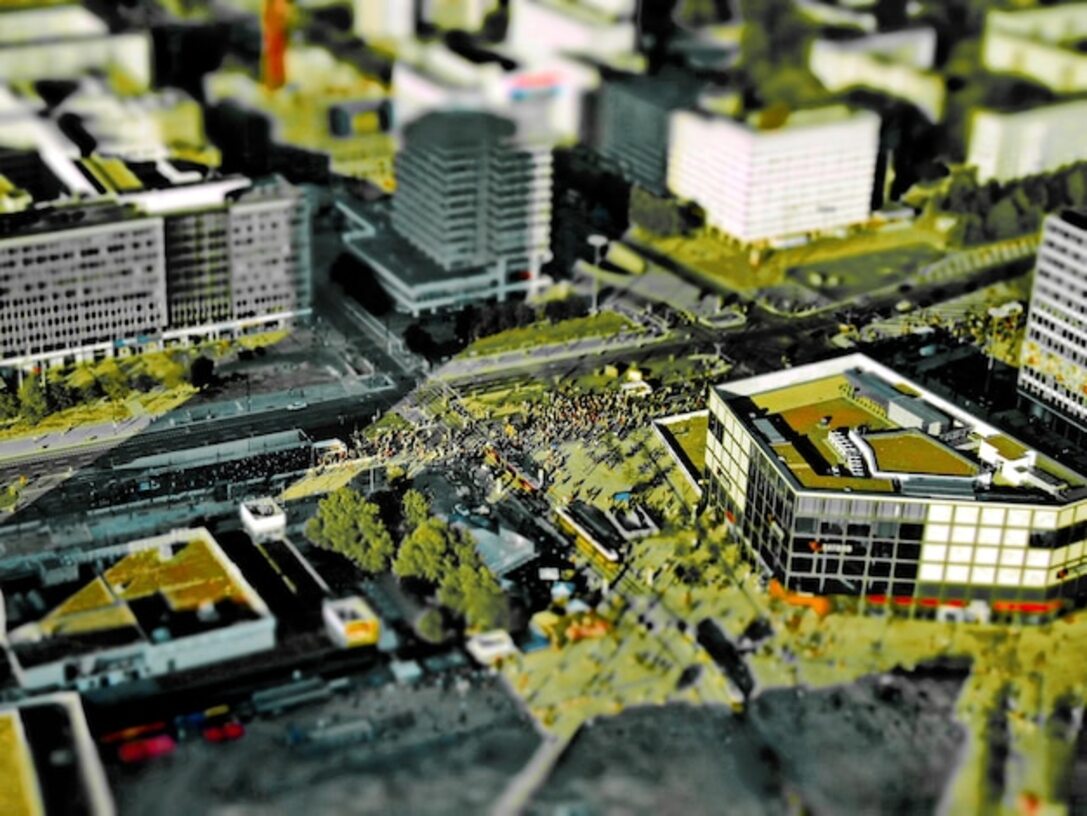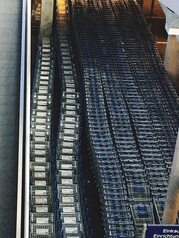The influence of the community on the value of rural and urban properties

The influence of the community is a key factor in property valuation, both rural and urban. In Costa Rica, the social, cultural, and economic dynamics of each area significantly impact the appreciation of real estate. In this article, we will explore how the community environment affects property values and what aspects to consider when investing in rural or urban areas. Discover why your choice of location not only defines your home but also its financial potential.
The importance of social capital in increasing real estate value
Social capital refers to the networks, relationships, and norms that facilitate cooperation among members of a community. In the real estate context, a community with a high level of social capital tends to be more cohesive and active in managing its resources and environment. This translates into greater security, better maintenance of common areas, and an overall more attractive environment for potential buyers. Communities where residents are involved and engaged often experience an increase in their real estate value, as the perception of quality of life improves significantly.
Furthermore, social capital also influences local economic development. When residents interact and collaborate on community initiatives, such as fairs or cultural events, a sense of belonging is fostered that not only strengthens the identity of the place but also attracts external investments. These initiatives can lead to improvements in infrastructure and public services, which is crucial for increasing property values. Therefore, when considering a real estate investment, it is essential to evaluate not only the physical characteristics of the property but also the level of interaction and collaboration within the surrounding community.
2. Comparison between rural and urban communities: Which offers more?
The comparison between rural and urban communities reveals significant differences that can influence decision-making when it comes to investing in properties. Urban areas tend to offer more developed infrastructure, with access to services such as schools, hospitals, and public transportation. This type of amenities attracts a larger number of residents, which can result in a steady increase in property values. However, this accelerated growth can also lead to market saturation, generating competition and price fluctuations. On the other hand, rural communities present a different appeal: they are often surrounded by nature and offer a more tranquil lifestyle. The connection with the community is generally stronger in these areas, which can increase the desire to live there for those seeking a family-oriented and collaborative environment. Although rural properties may not experience the same rate of appreciation as urban ones, their initial price is usually more accessible, representing an attractive opportunity for those willing to invest in the long term. Additionally, the growing interest in sustainable living and remote work has led more people to consider moving to rural areas, which could translate into future value increases in these less conventional places.
3. The role of infrastructure in property appreciation
Infrastructure is one of the fundamental pillars that influences the appreciation of properties. An area that is well connected, with access to roads, efficient public transportation, and basic services such as water, electricity, and sanitation, not only improves the quality of life of its inhabitants but also increases the attractiveness of the place for potential buyers and investors. In this sense, good urban and rural planning can be decisive in raising the value of a property. Properties located in areas where investments in infrastructure have been made tend to experience a notable increase in their valuation, which is beneficial for both current owners and future interested parties. On the other hand, the existence of well-maintained public spaces, such as parks, squares, and recreational centers, also plays a vital role in the appreciation of properties. The quality of the immediate environment influences the overall perception of the area and can attract different segments of the real estate market. Furthermore, an active community that promotes sustainable development and social well-being further increases the property's attractiveness. Therefore, when considering an investment in real estate, it is essential to evaluate not only the characteristics of the property itself but also the surrounding infrastructure and its potential impact on long-term appreciation.
4. How cultural activities enrich the environment and increase value
Cultural activities play a crucial role in the enhancement of properties, as they foster a sense of belonging and cohesion among community members. In both rural and urban settings, events such as festivals, craft fairs, and art exhibitions not only attract visitors but also strengthen social relationships and promote local identity. These gatherings generate greater interaction among residents and create a dynamic environment that can be highly appealing to potential buyers and investors. The presence of vibrant culture can transform previously considered less desirable areas into sought-after places for their enriched lifestyle.
Moreover, access to cultural facilities such as museums, theaters, libraries, and community centers increases the perceived value of a property. Homes located near these institutions tend to have a higher appreciation due to the appeal these resources offer to families and professionals seeking quality of life. Likewise, investment in cultural and recreational projects by the government or private initiatives can revitalize specific areas and create a ripple effect in the surrounding real estate market. Therefore, cultural activities not only enrich the social environment but also translate into tangible economic benefits for property owners.
5. Security and its impact on the perception of real estate value
Safety is a fundamental pillar that influences the perception of real estate value, both in rural and urban areas. The tranquility of a neighborhood translates into a higher demand for properties, as buyers seek environments where they can live and raise their families without worries. In this sense, statistics on crime and the presence of security services, such as patrols or community surveillance systems, play an essential role in the purchasing decision. An area with low crime rates not only increases the attractiveness of the place but can also justify higher prices for properties.
Additionally, the perception of safety is closely linked to other community factors, such as the level of education and social cohesion. Communities where neighbors know each other and actively participate in local activities tend to be perceived as safer. This creates a positive cycle; as the perception of safety improves, interest in properties in that area increases, raising their value. Therefore, when considering a real estate investment, it is crucial to evaluate not only the objective statistics about safety but also the subjective sense of well-being felt by current residents.
6. Current trends: Where are buyers heading?
Current trends in the real estate market reflect a significant shift in buyer preferences, as they increasingly value the quality of life offered by a community. In this sense, factors such as accessibility to basic services, recreational spaces, and safety have taken center stage. Buyers are looking for environments that promote not only their personal well-being but also social and cultural development. This translates into a greater demand for properties located in communities with a high level of social cohesion and vibrant cultural activities, which inevitably influences the property value.
Moreover, sustainability and respect for the environment are fundamental aspects for many current buyers. The inclination towards more eco-friendly lifestyles has led to an increase in the valuation of properties located in rural or urban areas that prioritize sustainable practices. These include everything from community gardens to recycling initiatives and energy efficiency. Thus, communities that promote these values not only attract an environmentally conscious audience but may also see an increase in their property value due to the growing interest in living in harmony with nature.
7. Success stories: Communities that have boosted their real estate value
Communities that have achieved comprehensive development often experience a notable increase in their real estate value, thanks to the creation of attractive and functional environments. For example, in certain rural areas of Costa Rica, the implementation of community projects such as local markets, cultural centers, and recreational spaces has fostered a sense of belonging among residents. This social cohesion not only improves the quality of life but also attracts new buyers interested in investing in properties that offer more than just a home; they offer a vibrant and active community. This phenomenon can be observed in localities that have managed to leverage their natural and cultural resources to transform them into tourist attractions, thereby raising the value of surrounding properties.
In urban environments, the success of community initiatives such as neighborhood associations or urban revitalization programs has proven to be fundamental in boosting real estate value. Cities where public spaces have been renovated or where environmental sustainability policies have been implemented often see a significant increase in demand for housing. Collaboration between residents and local authorities can lead to improvements in infrastructure, safety, and basic services, making these places desirable options for potential buyers and investors. In this context, it is essential to recognize how these collective dynamics not only benefit the immediate community but also create lasting economic opportunities for all involved.
8. Tips for assessing community impact when buying a property
When evaluating the community impact of purchasing a property, it is essential to research the culture and social dynamics of the area. This includes understanding the activities that residents enjoy, local traditions, and how they relate to one another. An active and close-knit neighborhood can add significant value to your investment, as it fosters a sense of belonging and security. Additionally, communities with regular events, such as fairs or festivals, often attract more people and create a vibrant atmosphere that can increase demand for properties in the area. So take the time to engage in community activities before making a purchase decision.
Another crucial aspect is evaluating the local infrastructure and available services. Proximity to quality schools, health centers, parks, and public transportation options not only enhances the quality of life for residents but also influences the long-term value of a property. Well-equipped areas are more attractive to future buyers and tenants, which can lead to greater appreciation of the property over time. Research the urban development plans in the region; future projects can dramatically alter the perception of the area and its economic potential, as well as its prospects for revaluation.



